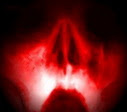
Runtime: 63'
Country: Yugoslavia
Language: Serbian
Color: Color
Sound Mix: Mono
Directed by
Writing credits
Djordje Kadijević based on the story "Posle devedeset godina" by Milovan Glisic
Cast
Mirjana Nikolić....Radoika
Petar Božović.... Strahinya
Slobodan Perović.... Živan
Tanasije Uzunović....the priest
Dragoljub Petrović (as Boban Petrović)
Toma Kuruzović .... Vule
Cinematography by
Music and Sound:
Milan Tričković
Make up:
Lepa Prvanović
Film Editing by
Production Design by
Costume Design by


TV film Leptirica is, historically, the first horror made in Serbia. Alibi for its creation was a respectable source - the story 'After ninety years' (1880) by Milovan Glisic. This writer was known mostly for his realist stories, but he also had a few which included motifs of Serbian folklore and superstition.
If anyone in then-socialist Serbia thought that the themes of vampires and witches were 'outdated', they got a wake-up call: a man in Skopje (Macedonia; at that time, one of the six republics of Yugoslavia) died of fright while watching the premiere of Leptirica on TV. Some papers used this as an excuse for a series of attacks directed at the director, Đorđe Kadijević, accusing him of making a 'terrorist film'. Not to mention those who claimed that a revered classic of Serbian literature was 'desecrated' by a very free (actually, completely original) ending. In spite of those attacks, however, Leptirica remains a revered cult classic whose nightmare-inducing power is undiminished.
In Glišić's story the main character is Strahinya, a poor lad in the 19th century rural Serbia. He falls in love with a lovely daughter of a wealthy but ill-tempered Živan. He is almost driven from the village when the village boss, the priest and a few village elders see an opportunity for Strahinya. The village is plagued by a vampire attacking millers in an old mill: since no one dares to stay the night over there, the people are on the verge of famine. Strahinya agrees to do the job, and manages to survive the night hiding in the attic.
After some troubles, the villagers manage to discover the vampire's grave. They pierce the (unopened) coffin with a stake, but due to clumsiness and fright of one of the company, a butterfly escapes from the coffin before it is sprinkled by the Holy water. It represents the soul of the vampire which remains undestroyed. Everybody thinks it's all over now, but in the end – the real horrors await Strahinya during his wedding night.
Kadijević's adaptation largely follows the story's spirit, including its apparently ironic stance toward peasants' superstition. While this is true for the bulk of the film, it is complicated by the fact that in the very first minutes after the prologue we are shown a rather gory vampire attack on an old miller, so that for the viewers there's no doubt about the real cause of the horrifying events even if the characters joke about alleged "vampires". After such an opening Leptirica continues quite innocently, almost like a romantic comedy tinged with some hints of the supernatural, but gradually it gets more and more creepy. Kadijević cleverly uses humor to disarm viewers and more efficiently shock them in the later sections in which the supernatural is no longer treated with ridicule.

The opening murder of the miller is a good example of Kadijević's sense for detail. Instead of presenting its whole figure, the vampire is rather implied by the large number of close-up shots: bulging eyes under thick eyebrows seen through a gap in the boards of the mill's wall; vampire's hairy fingers with claws going through the white flour; close-ups which reveal rodent-like teeth but no face under the hood... An excellent detail is also blood of the miller mixed with flour spilt on the floor. The vampire iconography which the director uses comes from the Serbian tradition, and owes nothing to Western vampires in the vein of Bela Lugosi and Christopher Lee.

Kadijević makes a radical departure from Glišić in his special emphasis on the character of Radoika, Strahinya's love interest. In Glišić's story she is merely a plot-device whose sole purpose is to motivate poor young man to go through a horrible ordeal and, in the end, to become his reward for a manhood proven. In the film version, Radoika (played by the beautiful Mirjana Nikolić) embodies the angelic-demonic aspect of the female, with a strong eroticism completely absent in the story. Kadijević resorts to a subtle treatment of Eros and Thanatos closer in spirit to the classics of European fantastic fiction from the 19th century. This is beautifully presented in a scene which suggests an invisible seducer. It seems that the entire forest is imbued with an ancient, demonic presence...

Instead of copying the genre formula from the West, Kadijević cleverly uses authentic Serbian tradition and draws from it the energy which makes his vampires indigenous, local, alive and above all - convincing creatures. Leptirica also corresponds with local, Serbian and universal archetypes of demonic powers. These scenes are directed with a skill which evokes archetypal forces and thus exceeds the lame, puerile, unconvincing Hammer films made at the same time (early 1970s). The film is rightly carved into the memory of generations of Serbian viewers and it is sad to see that Leptirica is still unavailable on a legal DVD, either in Serbia or abroad. The producers and owners of the film, Radio-Television Serbia, stupidly and selfishly sit on a gem which remains largely unknown to foreign viewers.
*
Leptirica is featured on the cover of book on Serbian horror films: IN THE HILLS, THE HORRORS by Dejan Ognjanović (see details here: SERBIAN HORROR FILM ).









Нема коментара:
Постави коментар